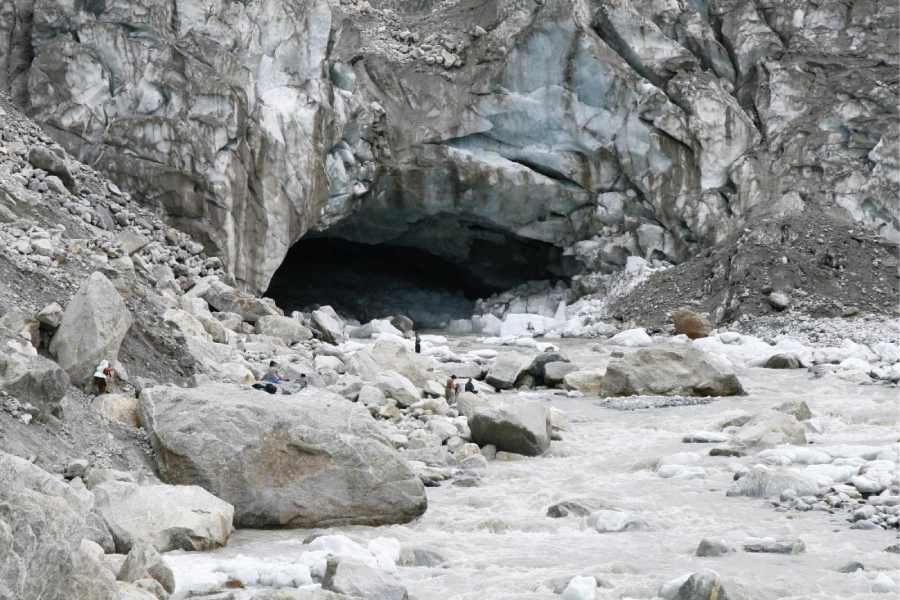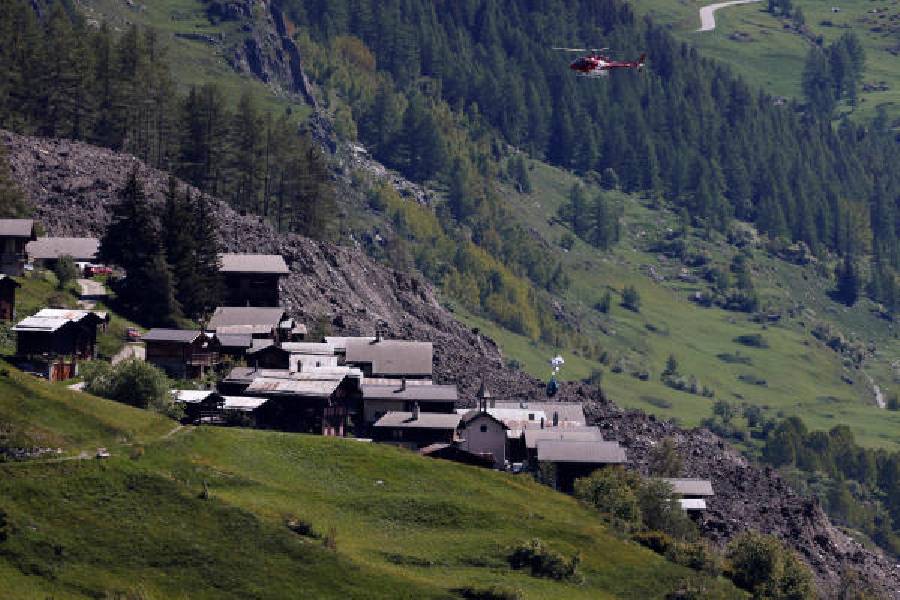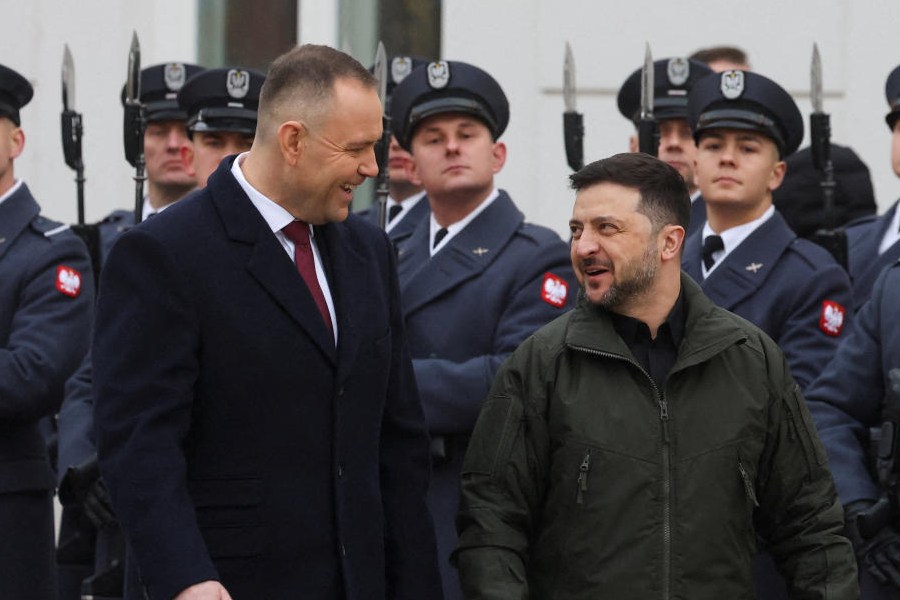Rebuilding was never in question.
The melting glacier collapsed on a Wednesday in May, a cascade of boulders and ice and water burying recently evacuated homes and farms in the village of Blatten. It took half a minute. By the start of the next week, authorities were already drafting plans for a new village, in the same valley, with the threats of a warming world still lurking in the Alps all around.
Blatten was home to 300 people before disaster struck; some families had been there for hundreds of years. Authorities do not know where exactly the new town will sit. But they have estimated it will cost Swiss taxpayers more than $100 million to build. Insurance payouts from the disaster are expected to add another $400 million for reconstruction.
It is a high-altitude example of the financial and emotional damage that Europe is suffering as the climate changes.
Months after the catastrophe, residents and authorities in the Lötschental Valley are still plagued by questions. How aggressively can their government clear red tape to build new homes? How many residents will rebuild their lives in the new Blatten? And how will they navigate the dangers posed by the glacier that lies on the ruins of the village like a dying dragon, still melting, still moving, still muddying the question of where in the valley is safe?
What local leaders — and every resident I spoke with on a recent trip to the valley — are not asking is whether the villagers should move out of the mountains. That would be an existential question, for Swiss identity and for settlement across the Alps.
“Our heart is here,” said Daniel Ritler, a lifelong Blatten resident who lost his house, his sprawling farm and the guest rooms he rented to tourists. “It was our paradise.”
The government’s rebuilding effort is led by Franziska Biner, the head of the energy and finance department of the Swiss canton, or state, of Valais, which includes Blatten. “We cannot say everyone needs to leave the places that are dangerous,” she explained in an interview, “because then we need to leave the canton.”
Researchers have long warned of the accelerating dangers that climate change, which is primarily caused by the burning of fossil fuels, poses to people and property in mountainous areas like the Alps.
Swiss researchers say the country has warmed twice as fast as the global average. Higher temperatures are thawing permafrost that acts as a sort of mountainside glue, raising the risks of landslides and rockfalls that can quickly turn deadly.
Warming is also reducing the number of good powder days at ski resorts, cutting into the tourism revenue that so many Alpine economies depend on. (The relative lack of snow also will lessen the damage from avalanches in the coming decades, researchers predict, but few in Switzerland are celebrating that trade-off.)
In recent years, no warming effect has more dramatically hit the Alps than glacial loss. Swiss glaciers lost more than 40% of their ice volume between 1980 and 2016, scientists have found. They lost another 10% in just two years, 2022 and 2023. Austria and France have seen similar shrinkage. In Valais alone, researchers now classify 80 glaciers as potentially dangerous for people or property.
Deteriorating glaciers can quickly collapse, as the people of Blatten learned in May.
The Birch Glacier had loomed in the peaks above the village for as long as people lived in the Lötschental. But it was melting, and so was the permafrost above it. Rockfalls were weighing on it. Researchers were watching for signs of trouble. Last spring, they saw them — and quickly evacuated the village.
A couple of days later, Lars Gustke, who operates a cable car that runs up the other side of the valley, watched in horror as the glacier above Blatten collapsed. The ice and parts of the mountain it swept along mashed homes and dammed the river on the valley floor, which quickly formed a small lake that swamped other buildings.
Nicole Kalbermatten and Lilian Ritler — a distant cousin of Daniel Ritler; Blatten is full of Ritlers — were working that day at Lötschental Marketing AG, the valley tourism board, which has offices beneath the cable car station. The lights flickered off, then back on, and Lillian Ritler opened a window. A pressure wave slammed into the building, set off by the glacier smashing downhill. Ritler rushed to find Kalbermatten, her best friend from the village.
“Blatten,” she said, “is gone.”
Gone were the three hotels that had housed skiers and hikers. Gone were the barns in the oldest section of the village. Gone was the communal oven where residents baked bread.
Only one resident died, thanks to the early warning and evacuation. Newly homeless residents moved in with friends in neighboring villages, or into vacant vacation homes that strangers offered up nearby. Then they grieved. “You don’t just lose the house,” Ritler said. “You lose the lanes, the church and your childhood.”
But you do not lose the village, at least in name. Swiss officials are committed to that.
Biner and her colleagues on the council that governs the canton decided within a week of the collapse that they must rebuild. They drafted a plan, presented in September, to do so within five years — with the first returning residents moving into new homes as early as next year. They have quickly reaped about $75 million worth of aid from private donors, nonprofits and government bodies. The state pledged about $125 million. Insurance companies are expected to pay about $400 million more.
“The new Blatten will be a different Blatten. The memories have been evacuated along with the people,” Mayor Matthias Bellwald said in an interview at the end of what used to be the road to the village. “It will certainly be a modern village. It will be a beautiful village.”
To help in the choosing of a site, government experts are refreshing their danger map of the valley — for avalanches, rockfalls and other natural disasters affected by warming temperatures. The glacier remains a destabilizing wild card.
“It’s still moving. The ice still needs to melt,” Biner said. “You have this lake that was built because of this mass that is there. So as long as this mass moves, the lake moves” — which makes new construction a challenge.
It could take years for the full risk picture for a new village to become clear.
Displaced residents who have returned to the ruined village, which remains buried and flooded, describe the experience in traumatic terms. They have also taken an economic hit. The disaster crimped this summer’s tourist season in the valley and will likely hurt winter revenues in the neighboring villages where many former Blatten residents work. Villagers are debating whether to eventually move to the new Blatten or stay where they are. Few are considering leaving the mountains entirely.
In other parts of the world, critics have questioned whether it makes sense to rebuild communities that are increasingly vulnerable to disaster in a warming world, including parts of the United States that have battled repeat flooding or rising seas.
That’s rare in Switzerland. Parliament has backed the Blatten rebuilding effort. With a few exceptions, so have other civic leaders. Alpine life, people told me at every stop for this story, is a defining part of the Swiss identity, even for people who live and work in large cities like Zurich or Geneva.
“I’m happily paying taxes, and I think the majority does, to allow these valleys to be inhabited,” Flavio Anselmetti, a geologist at the University of Bern in Switzerland, said in an interview.
But, he said, with warming temperatures changing risk profiles in mountainous regions, “some areas will have to be declared, OK, no, here we cannot rebuild. And then people are compensated in a way that the society or the village or the state gives them money or ground to build somewhere else.”
Daniel Ritler and his wife, Karin, briefly debated moving far from the Alps. But they decided to stay — not in the new Blatten, but in a nearby village, where they are refurbishing an old hotel, part of an effort to revitalize tourism in the area.
They recognize the risks of life in the valley, Ritler said, but the Alps are too deeply ingrained in his life to leave.
“I told Karin, ‘If you’re afraid, we need to talk about it,’ ” he said. “For me, it’s not a problem.”
“We must have respect for nature,” he continued. “We are lucky we were evacuated. And we are lucky that we are healthy and have two hands. And with these two hands, we want to achieve something.”
The New York Times













